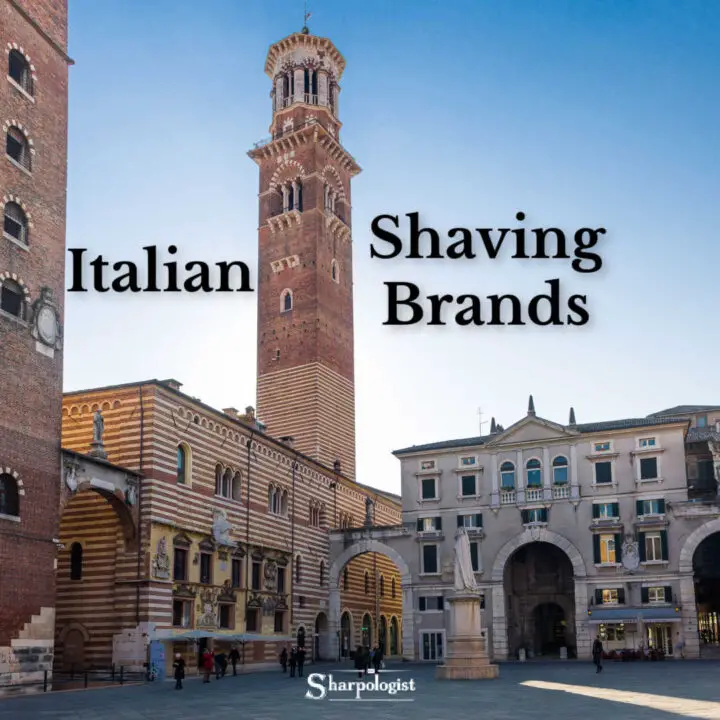
When it comes to shaving, Italians know a thing or two. In fact, some of the best shaving brands in the world are of Italian origin. Some brands like Antica Barbieria Colla, Cella, and Santa Maria Novella have been around for a looooong time, perfecting the art of shaving, and are still innovating and evolving. Here are company profiles of some of the brands.
[Note: geni.us links may be affiliate.]
Proraso
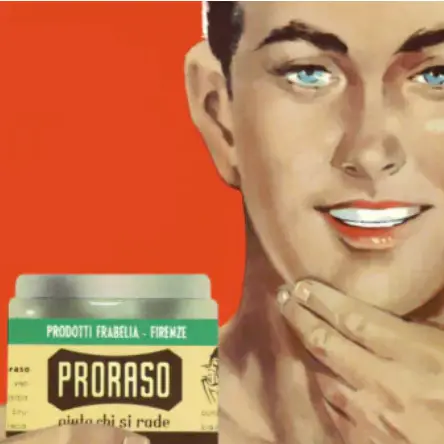
Ludovico Martelli founded a cosmetics company in 1908. Martelli’s son, Piero, joined the company in 1948 and changed the company’s focus from cosmetics to shaving.
Piero invented Proraso Crema Miracolosa, a eucalyptus-based cream that could be used before a shave to soften the beard and after a shave to soothe irritation, in 1950. It’s known today as Proraso Pre/Post-Shave Cream in the green jar.
The grandson of the founder, also named Ludovico Martelli, succeeded his father Piero in guiding the company in 1968. Ludovico grew and consolidated the products created by the first Ludovico. The purchasing habits of Italians changed but due to the loyalty of Proraso’s customers the brand successfully competed with the new powerhouses at retail.
In 1990, Proraso moved its headquarters to a suburb outside Florence. Ludovico expanded production of the company, as well as third-party brands (including one familiar to us here in the US, Marvis).
Proraso reformulated its products in 2012. For the most part the formula stayed the same, but it became over 95% natural origin and free of parabens, mineral oil, SLS, and silicones. Packaging also got an overhaul.
Antica Barbieria Colla
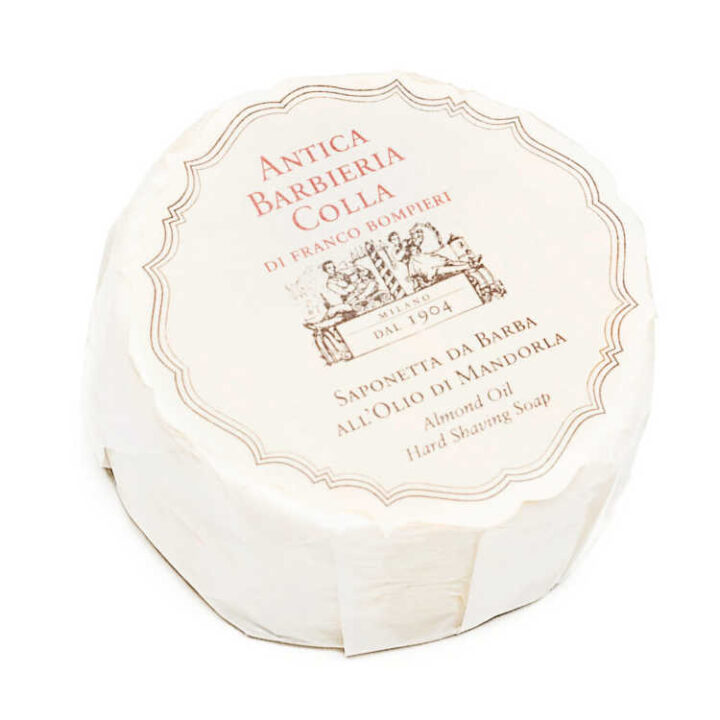
Dino Colla, a barber from the town of Ferrara, founded Antica Barbieria Colla in Milan in 1904.
Dino didn’t serve customers himself, but rather trained his staff to guarantee they could provide a highly refined service. After a few years Antica Barbieria Colla started to be considered as a sort of gentlemen’s club in the manner of British gentlemen’s clubs.
Antica Barbieria Colla moved to a larger location in 1919. A bombing in 1943 razed the area to the ground, closing the shop. They re-opened in 1944 at a new location (where they remain today). Among its many employees, only one, Guido Mantovanini, loyally waited for the reopening. His devotion was repaid by making him the sole heir of the business upon Dino Colla’s death in 1949.
Franco Bompieri joined Antica Barbieria Colla fresh from his experience at the Hotel Continentale in 1960. Bompieri’s clientele brought additional business and solidified Antica Barbieria Colla’s reputation.
Bompieri and Mantovanini became partners in 1965 and worked together for thirteen years until Mantovanini grew ill in 1973. Two years later, in 1975, Franco Bompieri became the sole shareholder of the shop.
Omega
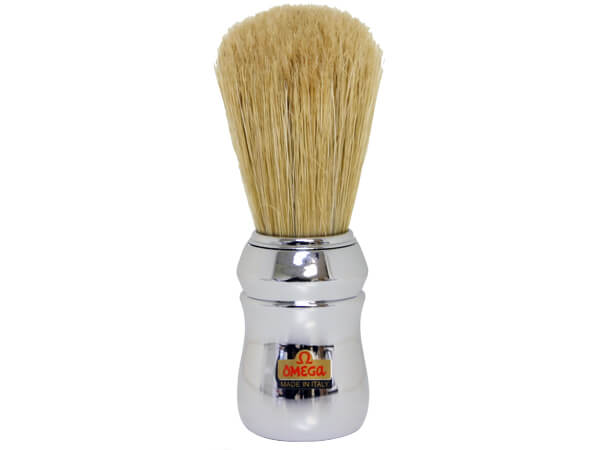
Omega was founded in 1931 in Bologna, when a previous property was taken over. At first the main business concerned the manufacturing of brush bristles: the production of painting brushes began in 1946 and shaving brushes were added in 1950. The brand makes a complete range of quality shaving brushes in boar bristle, badger hair, and synthetic fibers (though they are probably best known in the US for their classic boar bristle brushes, particularly the legendary “Pro 48”).
In 1964 the factory moved from the original small building to the current site, upgraded several times over the years to today’s almost 5000 m². Omega is a family-run business always involving the new generations (4 now): the current Chief of the Company began to give his contribution in his father’s business when he was just thirteen. Now, ninety five years old, he’s still involved and is supported by his nephews and other collaborators.
Cella
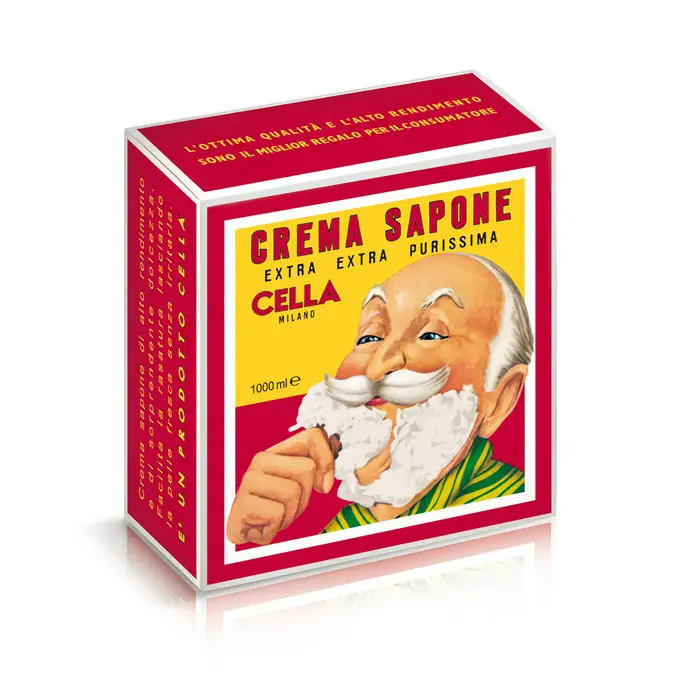
Cella was founded in 1899 in Milan, offering soaps, scents, hair lacquer and brilliantine.
Cella aimed for a top quality product. They selected the best ingredients and slowly cooked them in a steam boiler, then seasoned the soap for a few weeks to concentrate it, a unique process at the time.
Cella was awarded a gold medal at the universal exhibition in Milan in 1906 and the Grand Cross for industrial achievements in 1908.
Around 1915 Cella Shaving Soap Cream became popular among professional barbers of the time. Its “extra extra super-pure” formula made it stand out from other similar products. It guaranteed a better yield and its outstanding hydrating properties greatly softened facial hair, making it easier to cut and protecting the razor’s blade at the same time.
Safety razors became popular after World War I. It was a turning point – the shaving ritual, born in barbershops, moved to home bathrooms, where it became more of a private, daily ritual.
Cella rode this change by asking their designers to create a box that stood out from the many consumer products on the market. The result was a brightly colored package, featuring a man with a cloud of foamy white cream on his face. Mr. Felice (“Mr. Happy”), Cella’s smiling vintage icon, still features prominently on their packages.
Cella introduced their Kilo format shave soap (also called the kilo bar), designed for barbershops, in the 1960’s. Barbers used to cut slabs from it and store the rest in the original packaging to preserve its properties. This format was followed by a consumer version, Cella Milano Shaving Cream Soap. It was in a jar with a lid, AKA a bowl, which is still part of the slang associated with the ritual of shaving.’
Santa Maria Novella
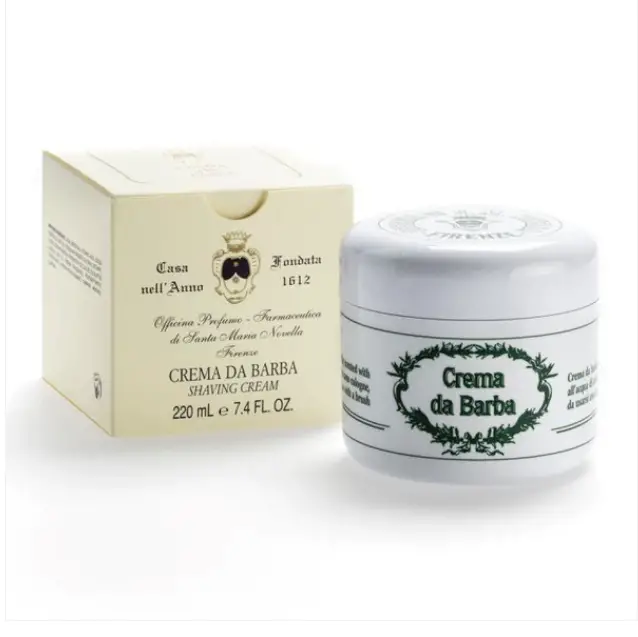
Santa Maria Novella, “Officina Profumo-Farmaceutica di Santa Maria Novella,” can trace its roots back to Florence in 1221, when Dominican friars founded the convent of Santa Maria Novella. From their garden, many centuries of experience in pharmacopoeia and natural preparations began to develop. And in later years that experience would expand to include cosmetics, fragrances and wellness products.
The first evidence of the production of scented waters dates back to 1381. The decades of the Black Death were particularly hard for the afflicted populations: that is why the Dominican friars distilled Acqua di Rose (rose water). At the time, this was used both to sanitize rooms and for personal care, taken with wine or in pills.
A very young Catherine de Medici left Florence in 1533 to marry the future king of France. Among her entourage was Renato Bianco, a perfumer, and in Paris he became known as René le Florentin. And the art of perfume spread throughout the world from the ancient wisdom of the essence-makers of Florence.
The first secular management of the convent pharmacy of Santa Maria Novella dates back to 1542. The pharmacy’s accounts became independent from those of the convent, and the doors of the pharmacy “officially” opened to the public, though 1612 is the date conventionally given for the start of the activity of the Officina Profumo-Farmaceutica, though the directors would continue to be Dominican friars for another 250 years.
Friar Cosimo Bucelli, an “aromatician” and ointment-maker from 1743, was an experimenter who loved to combine medicinal properties with pleasant scents. Bucelli also renovated the rooms of the Antica Spezieria and brought the products of the Officina to the attention of the world.
In 1866, the property was confiscated by the kingdom of Italy and, according to Wikipedia, “passed into the ownership of Cesare Augusto Stefani, the nephew of the monastery’s last director, Damiano Beni.”
Most of the ingredients are still grown in the pharmacy garden. The bags, labels, and boxes are manufactured on-site as well, which in 2000 was finally moved from the original facility to a nearby spot in the northern part of Florence.
Around that same time Santa Maria Novella began production of their shaving cream.
Summing Up
In conclusion, these are some of the most popular Italian shaving brands. They are all known for their quality products and have been in business for many years. If you are looking for a new brand to try, any of these would be a great choice.

Great info!!! I just cracked upon a tube of Proraso (green). I’m putting in an order for Cella so I can be Mr Felice, too!
Mark, Another great article. I will try some of these companies.
Great rundown of the Italian brands!!!!!
Outstanding article. Cella and ABC are my go-to shave soaps.
Also find that a boar brush gives the closest shave.
Very interesting,glad you are doing this review.